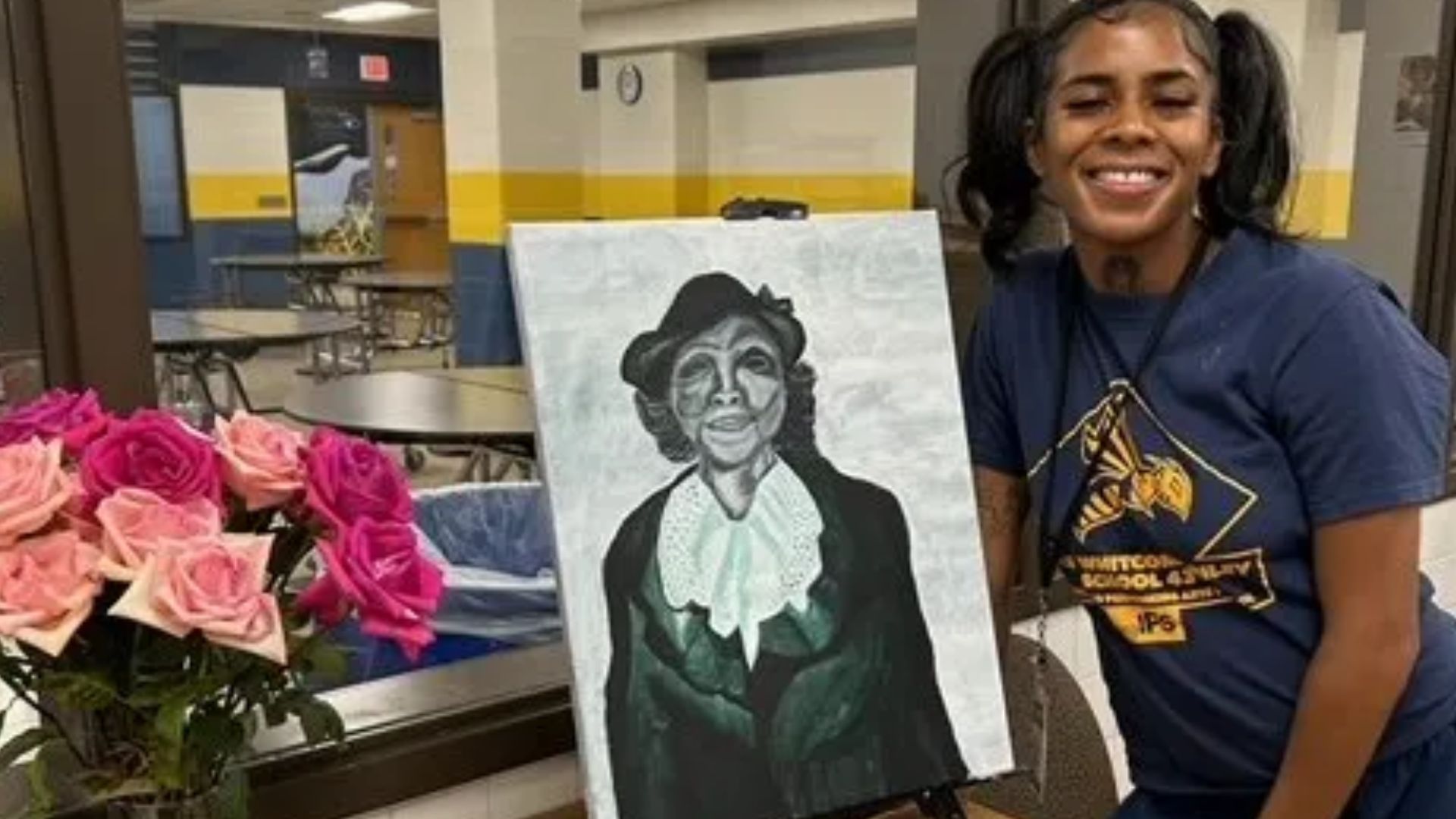Indianapolis, Indiana – At James Whitcomb Riley School 43, art does not just live on stage or in classrooms—it spills into hallways, cafeterias, and quiet moments between the school day’s routines. While students are surrounded by formal instruction in music, dance, and visual arts, one unlikely source of inspiration has captured their attention and their hearts: cafeteria worker and self-taught artist, Anika Evans.
For Evans, lunch breaks are not just a time to rest. Instead, she turns them into creative sessions, sketching and painting as curious students gather around to see her work in progress. Brushes and pencils move quickly across the page, and the cafeteria transforms into an art studio filled with energy and curiosity.
“It is a joy sharing my art with the students,” Evans said. “They truly helped me develop because I use them as models, and I’ve gotten good at my cartoon sketches because the students let me practice by creating cartoon sketches of them. It’s important that they see the process of creating art. I want them to know everything around them is art.”
Her passion for drawing began long before she stepped into the cafeteria at School 43. As a child, Evans was rarely without a pencil in hand, constantly doodling and exploring her creativity. By the time she reached high school, her talent was undeniable. She remembers painting a portrait of herself and her twin sister called Fraternal, which was chosen for an art show—a milestone that gave her the confidence to see herself as a true artist.
That confidence only grew when her grandmother became her first loyal customer, requesting family portraits that Evans lovingly created. Over the years, she has explored different mediums, but acrylic paints became her favorite tool for capturing color and depth. More recently, she has shifted toward cartoon-style sketches, experimenting with character designs and even dreaming of illustrating children’s books in the future.
Her presence at School 43 fits seamlessly with the school’s new direction. Located in the Butler-Tarkington neighborhood, the Pre-K–8 campus has recently reinvented itself as a visual and performing arts school through Indianapolis Public Schools’ Rebuilding Stronger initiative. The transition has reshaped its identity, centering creative learning as a core part of student development.
Backed by a $5.5 million renovation, the school now features state-of-the-art spaces including a dance studio, orchestra room, theater, and stage. A $10,000 arts grant further expanded opportunities, bringing special programs such as the John Lennon Educational Tour Bus, where students were able to record music and produce videos. For many, these experiences have deepened their understanding of how art connects with everyday life.
Evans sees that change firsthand. “I have noticed changes in how the students view art,” she said. “They are starting to understand that everything around them is art. Art is music. Art is math. Art is science. Art is literature.”
Her words echo the school’s mission, but her actions make it tangible. While certified teachers guide structured lessons, Evans models something just as valuable—that art can be woven into daily life, whether during a formal class or while sitting at a cafeteria table with a sketchbook.
Principal Crishell Sam praises Evans not only for her artistic spirit but for her broader impact on the school community. Beyond her creative work, Evans has taken the initiative to lead a girls’ mentoring group, helping students build positive relationships and confidence. She also supports the school’s after-hours events, from performances to athletic games, strengthening the sense of community that School 43 is working hard to cultivate.
“Also, she consistently shows her commitment to our students by supporting after-school events such as school performances and athletic events,” Sam said. “Her dedication strengthens our community and provides meaningful opportunities for student growth beyond the classroom.”
For the students who crowd around her table at lunchtime, Evans offers more than a drawing. She offers a message: art does not need a stage, gallery, or spotlight to matter. It can grow in kitchens, classrooms, and cafeterias. It can begin with curiosity and a blank sheet of paper.
Now in its second year as a dedicated visual and performing arts school, James Whitcomb Riley School 43 is shaping a generation of students who see creativity as part of who they are. And in the middle of that transformation, Evans continues to sketch, paint, and inspire—proving that sometimes the most powerful lessons in art appear where students least expect them.









